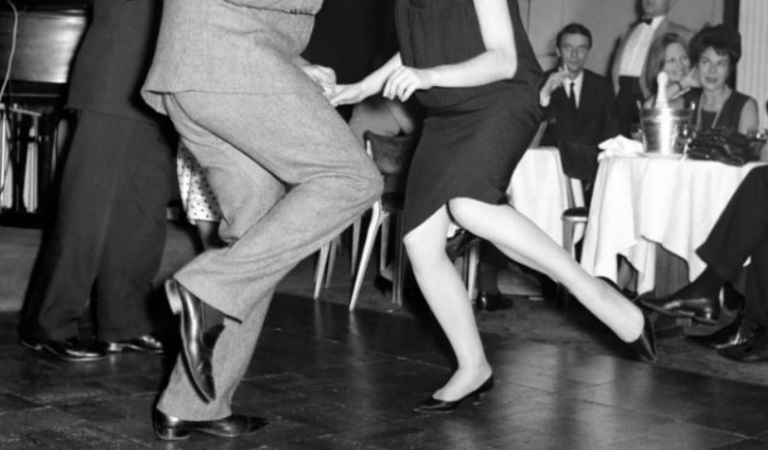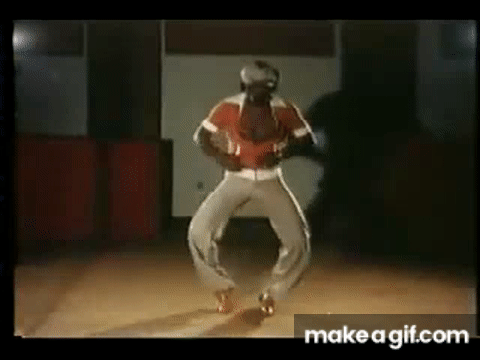Inspired by so many good songs and the involvement of television shows, the collection of 60s dance moves is full of popular names that are still a symbol of the general culture.
Some of them are even more relevant than the recent dance craze. Do you think you have seen these names and watched these movies?
Let’s check them out!
Table of Contents
List Of Popular 60s Dance Moves
The Twist – The Iconic 1960s Dance Hit
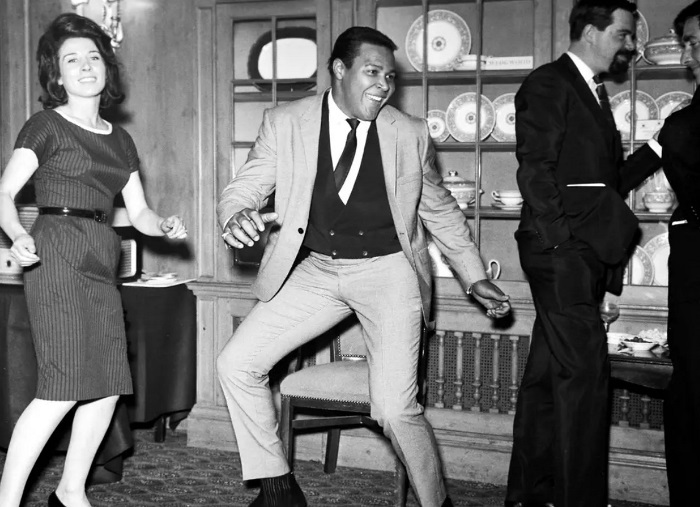
Harry Hammond/V&A Images/Getty Images
On a Rock ‘n’ Roll background music, the Twist took the world by storm at the beginning of the 1960s. It first appeared on a track of the same name by Hank Ballard and young people loved it.
However, due to the movements involving so much body swaying and hips twirling, the parents thought the dance was too provocative.
Television producer and personality Dick Clark didn’t want the potential of the song to be wasted, hence he suggested Chubby Checker remake it into a more audience-friendly song. One of the greatest hits of the 60s was born.
In 2012, approximately 4,000 fans danced to “The Twist” sung by Chubby Checker, setting a new world record and reaffirming that the dance move is still living on.
Check more: 13 Most Popular 70s Dance Moves
The Bossa Nova
Derived from Samba in a more relaxed way, professionals considered it a simplified Samba because the instruments – except for the tamborim – were all removed.
“The Morning of the Carnival” was the pioneering soundtrack to start this dance wave and refresh the state of Brazillian music.
Bossa Nova is a hybrid of the Samba vertical motions and the Rumba hip motions. When there has to be a tap step, the dancers will do it very gently and retain the smoothness of the dance.
Nonetheless, the tenderness didn’t make Bossa Nova a good dance music, and its dance faded in the next decade.
The Bug
The Bug is a dance featured in the same song by Jerry Dallman. With three chords included, the track was remarkably more intricate than other Rock ‘n’ Roll songs in its time.
It got to a few charts, though the fact that it was under the Punch label stopped it from being distributed nationally.
The dance move reappeared in “Hairspray” and surprised everyone, including the original artist. It mimics the movements of a person frantically getting ants out of their pants.
The Frug
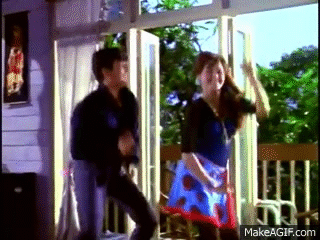
The Frug started in the middle of the 60s when Pop music finally had some significant advancements.
The Frug move was developed from the Chicken move, a variation of the Twist with a noticeable change of pace.
Once dancers grow tired, they can stay in the same place and only move their arms. The variety of arm movements has led to a lot of new similar moves.
Aside from big appearances such as Esquire (November 1964), Sweet Charity (1969), or The Andy Griffith Show, the name Frug was also featured in later works, proving its influence on popular culture.
The Freddie
With the release of two songs, “Do the Freddie” and “I’m Telling You Now”, the fad dance became a craze in the United States.
Perhaps its popularity was short-lived, but it would be hard for us to deny that it was not recognizable. It was even seen in an episode of the widely acknowledged series The Addams Family.
In the Freddie move, the dancer will almost stay in the same place. They only need to raise their arms and extend one of their legs at a time, going at it until the end of the song.
The Funky Chicken (by Rufus Thomas)
The dance was closely associated with the song “Do the Funky Chicken” by Rufus Thomas.
The song was considered one of the biggest hits among the novelty hits by Thomas, which explained the popularity of the dance.
Thomas shared that he had no idea how the inspiration found him either, though he thought of not raising both his arms at once instead of one at a time.
He knew the act as a hen was goofy too, yet it didn’t stop him from doing it and hyping his crowd up.
The Ginza
Usually performed to the track “At the Ginza” by The Entertainers, the Ginza dance was a rather simple dance move with the performers taking turns sinking onto the floor with their knees.
When extending their hands, they keep holding onto the prepared props.
People believe the name Ginza came from a discothèque with Japanese themes. There were hanging cases with female dancers inside, yet eventually, patrons and commoners also followed the trend.
The Hitch Hike
The dance craze started in 1962 with the hit “Hitch Hike” by Marvin Gaye. In 1969, it was once again refueled by “Hitchin’ a Ride”, the Vanity Fare’s gold disc. During this era, you would see it so frequently in the clubs.
Imitating the hitchhiking motion, this so-called dance move couldn’t get any simpler: stick out your thumb and wave it.
Some patterns include hand claps and shimmy moves, which were also trendy in the 1960s. For better effect, the dancers might add hip movements or backward steps.
The Hully Gully
The Hully Gully move was a line dance without structure at first, inspired by a duel folk game. The first trace went back to Frank Rocco in Florida.
The Olympics performed “Hully Gully” in 1959, and the Olympics remake of the song was more widely popular.
The move has survived the test of time and gained a modern form, consisting of simple steps that everyone can execute at the call of the MC.
The challenging aspect here is about trying to keep up with the pace, and this game-like nature is highly favored in gatherings.
The Jerk
As a single from the Money label, “The Jerk” immediately became a hit for the Larks, a band from Los Angeles.
It inspired a series of relevant songs such as “Can You Jerk Like Me” by the Contours (1964), “Come on Do the Jerk” by the Miracles (1964), “Monkey Jerk” by Dobie Gray (1965), or “Cool Jerk” by the Capitols (1966).
The movement of the arms and the hands resembles a conductor, and the dancer has to use enough strength to make the motions jerky.
Even after the sixties, this move still has a certain level of influence on the general culture.
The Locomotion
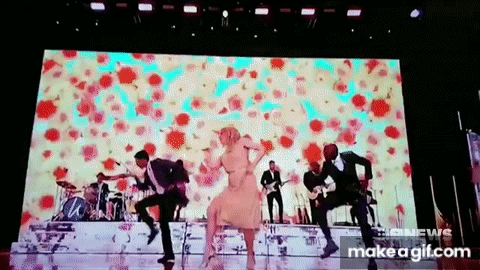
You might see this single album in a lot of collections because it was one of the rare dance songs that made it to the American Top Three in different time stamps and with different artists.
It paved the way for the line dance of the same name.
The dance move itself is very simple, with the locomotive motion as the core and more dance sequences built around it. Therefore, it is more well known as a line dance and the number of dancers for it is quite large!
The Loddy Lo
Loddy Lo is a dance of the 60s, characterized by self-handholding. In its signature pose, the dancer will put one foot forward and lean to the other side slightly with palms pressed together in front of their chest.
For the accompanying music, you have the original “Loddy Lo” track by Chubby Checker, a re-recorded version of “Hey Lolly Lolly” by Woody Guthrie (1944).
There were more adaptations around that time, though none of them was more popular than the Chubby Checker’s track.
The Madison
This novelty dance originated in Columbus in 1957 along with its song. The Buddy Deane Show’s producers noticed the potential and thus more dance shows ended up taking a piece of it.
It was included in the movie and the musical of Hairspray with various songs following the dance craze.
At parties and gatherings, the Madison line dance is a favorite with its back-and-forth pattern and called steps.
Today, it is still a nostalgia, sometimes performed by dance teams in competitions.
The Mashed Potato
The Mash Potato was another dance craze starting in 1962, even though the origin of the dance was in 1959 when James Brown regularly included the corresponding song in his concerts.
However, the track usually associated with it is “Mashed Potato Time” by Dee Dee Sharp.
People said it was a bit similar to the Twist and, interestingly enough, both Chubby Checker and Sharp were Philadelphians.
If you prefer some pivots in your dance routine, you will certainly enjoy the Mashed Potato more!
The Monster Mash
Not any other festival, “Monster Mash” was a soundtrack released in August 1962 and became a hit right before Halloween.
It is amazing how the EP remains a favorite for Halloween to this day. In 2021, it ranked #37 on the Billboard Hot 100.
The dance portrays a deranged scientist whose lab was taken over by monsters, and they throw a grand party. The characters, being iconic horror characters, were also a reason for the Monster Mash’s popularity.
The Monkey
A ‘60s dance move list wouldn’t be complete without the Monkey dance. It had two R&B hits backing it up: “Mickey’s Monkey” by the Miracles and “The Monkey Time” by Major Lance.
It has been mentioned in Johnny Bravo, The Simpsons, and Overman King Gainer – all of them are well-known animated series.
It looks goofy but funny, resembling a monkey’s actions such as scratching its head or holding bananas.
The Pony
Chubby Checker struck again with his recorded single “Pony Time”, and it was his second time getting a #1 soundtrack in the R&B category of the US chart.
Therefore, the dance accompanying it was also very popular.
As the name indicates, the dancers will execute movements that look like they are doing horse riding, most likely with a triple step.
It is not a line dance but is still open to circular formations such as turning or chasing. However, dancers usually won’t touch each other.
The Stomp
If you look up “The Stomp” on the internet, there might be various results aside from the 1960s dance craze we are talking about.
Some people who have been through the era even claim that the Stomp was more popular than the Twist at some point.
It took over the Australian coasts in both council halls and surf clubs. The stomping movement was something anyone could learn and thus quickly became known by everyone.
Rumors said that some regions had to ban the Stomp to protect their buildings.
The Swim
The Swim dance was born as an accompaniment to the song “C’mon and Swim” by Bobby Freeman (1964). The name was telltale enough: the dancers would imitate various styles of swimming.
It has the same footwork as the Frug, with the hip swaying to the side repeatedly.
For the hands, you can try any combination of the swimming styles you know: backstroke, sidestroke, breaststroke, overhand crawl, mud crawl, or underwater.
The Tamoure
A little bit different from the dances we have mentioned in this list, the Tamoure has a Tahitian origin. For foreigners, it is also the signature of Tahiti.
Popularized by 1960s music, especially the 1963 hits by Bill Justis, the dance surprised the whole world.
It is usually performed in pairs with the females remaining relatively still and the males moving around their respective partners. They rely on the knees to get their hips moving, hence it requires some practice!
The Watusi
One might say the popularity of the Watusi dance was too fleeting because it only lasted during the early 1960s. Nonetheless, it was unique as a solo dance and also highly appreciated in the US.
Its name is derived from “Tutsi”, an African group known for extraordinary dances.
“The Wah-Watusi” by the Orlons was a lifetime hit for them, and the later records had impressive achievements too.
People used to play these songs at surf or beach parties, leading to more versions like putting their feet in imaginary sand.
Final Words
Did you enjoy the journey against the current of time? Are these 60s dance moves nostalgic for you or completely new?
Either way, I know there are many more dance crazes in this eventful era of all music genres, so please give us a hand and share your favorite moves with us!
